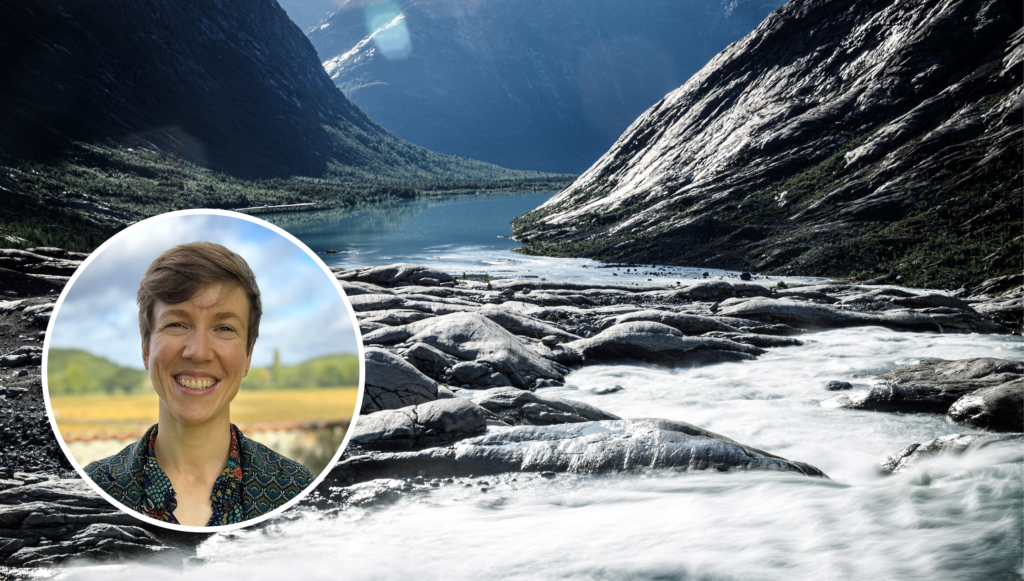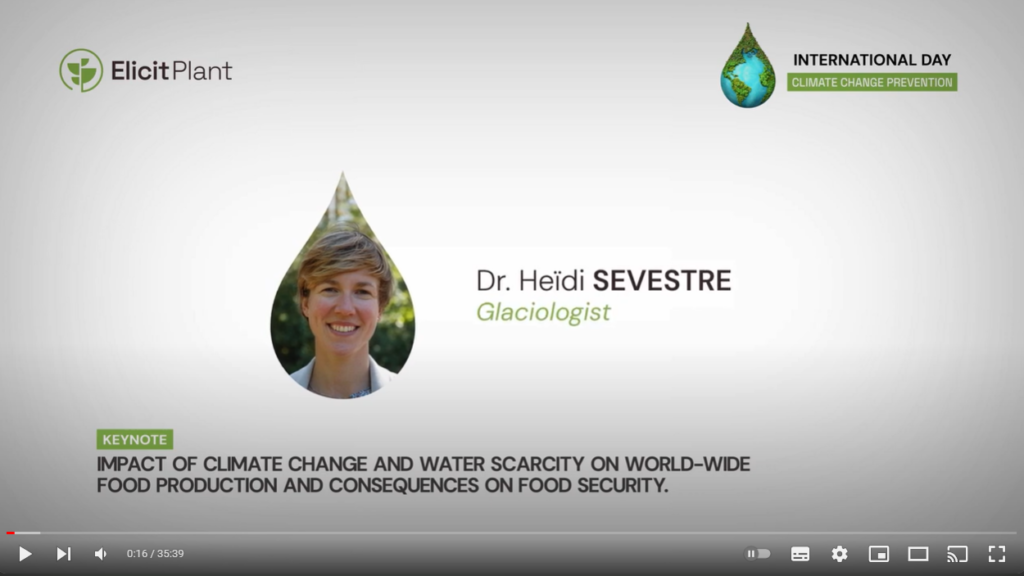Glaciers are “natural water towers,” explains Dr. Sevestre, and “glacier water still serves us immensely” in our daily lives. In fact, over two billion people worldwide depend on glaciers for their drinking water, generating hydroelectricity, cooling nuclear power plants in summer, tourism, and for agriculture. However, due to climate change, these glaciers are in danger of disappearing, as “every ton of CO2 released into the atmosphere increases temperatures on Earth and melts these water and snow reserves”. And “without water, there will be no agriculture”.
Climate change
According to glaciologist Dr. Heïdi Sevestre, “glaciers are the best climate barometers”
How are glaciers directly linked to agricultural activity? This is the question Heïdi Sevestre, a glaciologist based in Svalbard where the Global Seed Vault is located, answered at the International Climate Change Prevention Day organized by Elicit Plant. Her clear, well-illustrated presentation helps us understand the issues surrounding global warming and melting glaciers, and how these relate to the need to preserve water resources.

Towards more climate chaos
Dr. Heïdi Sevestre goes on to talk about the importance of the Arctic ice pack, whose surface reflects solar radiation, and in so doing helps cool the planet. But “since 2005-2010, we’ve been in the process of atomizing this ice pack,” she explains, showing a video to demonstrate the issue.
As the Arctic warms, the temperature gap with Europe narrows, affecting north-south air circulation and wind speeds. “The problem is that these winds slow down (…) and we can find ourselves in a heatwave situation, drought or, on the contrary, extremely intense rainfall, blocked in for days or even weeks”. We can therefore expect more climate chaos.
To highlight the consequences, the glaciologist quotes an excerpt from a report by the IPCC: “Climate-related extremes have affected the productivity of all agricultural and fishery sectors, with negative consequences for food security and livelihoods.”
She continues by explaining how, “all these winds that can increase soil erosion, all this precipitation that can drown our crops, or on the contrary, these droughts… are directly connected to the Arctic”.
Rising sea levels and thawing permafrost
Today, we know that sea levels are rising by 3 mm to 4 mm per year, but this increase could be much higher if the two largest ice reserves in Greenland and Antarctica were to disappear. Greenland losing its ice represents, “a 6 to 7-meter global rise in sea and ocean levels…” If Antarctica lost its ice, worldwide ocean levels would increase by “58 meters,” highlights Dr. Sevestre.
The website climatecentral.org helps visualize the agricultural areas affected by rising water levels. The expert illustrates her point by simulating a 1 to 3-meter rise in water levels in the La Rochelle area of France, showing clearly visible loss of agricultural land.
The glaciologist goes on to discuss the problems associated with permafrost thaw. By 2060-2080, “new land may become available” particularly at high latitudes, to grow one or two crops, sometimes more.
However, this permafrost is a major carbon sink. Not only does permafrost thaw, “destabilize all the infrastructure built on it”, it also “emits greenhouse gases”. As such, “today, permafrost emits as much greenhouse gas as Japan”. And if temperatures continue to rise, GHG emissions from permafrost will also intensify.
What are the solutions?
So, “what do we have to do?” asks one of the participants during the final Q&A session. “Decarbonization” is what we should be aiming for. “Every extra tenth of a degree that we can avoid is good for us all. It’s good for our water, our soil, our food security,” Heïdi Sevestre explains.
“Food safety and ice are the same battle. Today, we’re all together to fight against climate change, to ensure that in the next decades we can continue to feed the planet without affecting its carbon sinks, without affecting our soils,” she says, emphatically. The key is “cooperation”, using the leverage available in each domain.
Dr. Sevestre concludes by stressing, “the importance of solutions that help us prepare for the eventuality of having to use much less water”.
Watch Heïdi Sevestre’s presentation


